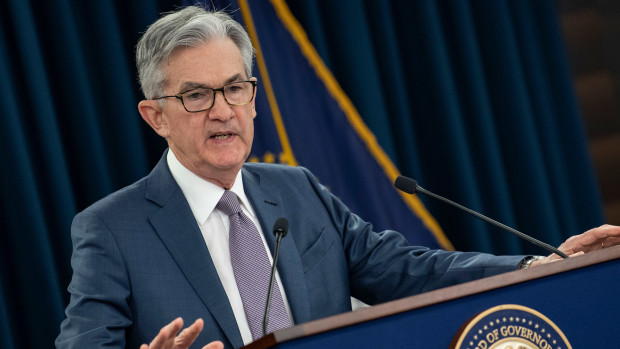
The Federal Reserve resumed its rate hike cycle by lifting its benchmark lending rate to the highest levels in more than two decades Wednesday, while repeating its view that further increases will likely be needed in order to bring inflation back to the central bank's 2% target.
Stocks moved higher in the wake of the decision, as well as comments from Chairman Jerome Powell that suggested the central bank is no longer forecasting a U.S. recession.
The Fed lifted its Fed Funds rate by a quarter of a percent, to between 5.25% and 5.5%, extending its current tightening cycle with the eleventh increase in sixteen months and taking the benchmark to its highest since December of 2001.
"The Committee will continue to assess additional information and its implications for monetary policy. In determining the extent of additional policy firming that may be appropriate to return inflation to 2% over time, the Committee will take into account the cumulative tightening of monetary policy, the lags with which monetary policy affects economic activity and inflation, and economic and financial developments," the Fed said in a statement.
"In addition, the Committee will continue reducing its holdings of Treasury securities and agency debt and agency mortgage-backed securities, as described in its previously announced plans," the statement added. The Committee is strongly committed to returning inflation to its 2% objective."
Powell added that it was "possible" the Fed could raise rates again in September, "if the data were to warrant it" but also said the central bank would pause if it did not, noting that "we've raised rates by 525 basis points since March of 2022 and our policy rate is now restrictive (and is) putting downward pressure on economic activity and inflation".
Uhm - about as "unchy" as it gets with the new #FOMC statement. pic.twitter.com/Tn0zjWE8Bl
— John J. Hardy (@johnjhardy) July 26, 2023
U.S. stocks pared declines immediately following the Fed decision, with the S&P 500 marked 4 points lower on the session while the Dow Jones Industrial Average was up 120 points. The tech-focused Nasdaq was marked 2 points lower.
Benchmark 10-year Treasury note yields were marked 4 basis points lower at 3.865% while 2-year notes slipped 4 basis points to 4.856%. The U.S. dollar index, meanwhile, was marked 0.42% lower at 100.92 against a basket of six global currency peers.
CME Group's FedWatch now suggests a 21.2% chance that the Fed will lift rate by 25 basis points (0.25 percentage point), to between 5.5% to 5.75% at its next policy meeting in September. The odds for a November hike, however, were pegged at 36%.
"Whether or not the Fed hikes rates again may be beside the point. The important takeaways are that interest rates are likely to remain elevated for quite a while, and that these levels aren’t necessarily an impediment to continued economic growth or stock market performance," said Mike Loewengart, head of model portfolio construction at Morgan Stanley Global Investment Office.
"It’s easy to forget that the low interest rates investors became accustomed to in recent years were the exception, not the rule—the Fed Funds rate is now just a little above its seven-decade average," he added.
The move followed its regular two-day policy meeting in Washington, and last month's decision to pause rate hikes while assess their impact on the economy, amid an easing in headline inflation pressures and moderating jobs growth.
The Commerce Department reported earlier this month that headline consumer price index for June was estimated to have risen 3% from a year earlier, the slowest rate of increase since March 2021 and down from the 4% pace recorded in April. The June reading marked the 12th consecutive month of decline for headline inflation, which peaked at 9.1% in June of last year. That's the longest streak since 1921.
The Conference Board's most-recent survey of inflation expectations, published earlier this week, fell to the lowest levels since 2020.
The last reading of the Fed's favored inflation gauge, the core PCE Price Index rose 4.6% from last year over the month of May, down from the 4.7% pace recorded in April. The June reading will be published on Friday.
The job market also appears to be cooling, as well: last month's non-farm payroll report showed the weakest gain for new hires in three years, with 209,000 new jobs created and average hourly earnings growth stabilizing at around 0.4%.







